


xxxxxAs we have seen, the
Constitutional Act of 1791 (G3b) divided the colony into Lower Canada (based on Quebec
and mostly French speaking) and Upper Canada (based on Ontario and
mostly English speaking). This proved moderately successful. During
the War of 1812, for example, both provinces remained loyal to the
Crown. Afterwards, however, the emerging middle class wanted
democratic reform to overthrow the small privileged cliques which
ruled in both provinces, and to improve economic conditions. This
unrest led to two uprisings in 1837. The rebellion in Lower Canada
was led by the radical politician Louis Joseph Papineau, and the one
in Upper Canada by the Scottish reformer William Lyon Mackenzie.
Both revolts were quickly put down, but they drew attention to the
country’s outmoded constitution. An enquiry into the situation
resulted in the Durham Report of 1839. This advocated a union of the
two provinces, and this was put into effect by the Union of Canada
Act of 1841. This
also led to a large measure of self-
THE UNION OF CANADA ACT 1841 (Va)
Acknowledgements
Map (Canada): licensed under
Creative Commons – https://commons.wikipedia.org/wiki/File:Canada. Papineau: date and artist unknown. Toronto:
contemporary English engraving, artist unknown – Canadian Military
Heritage, Department of National Defence, Ottawa. Durham: detail, by the English portrait painter Thomas
Phillips (1770-
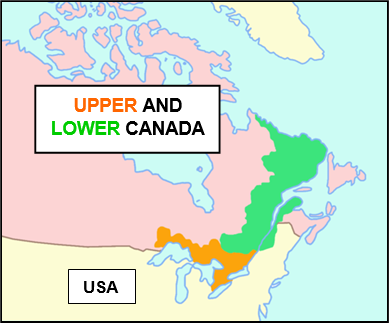 xxxxxAs we have seen, during and after the American War of Independence some 50,000
loyalist fled north from the United States and settled in Canada.
Their arrival threatened the political and social stability of the
colony. They were soon agitating for their own religious and social
systems, together with the political and property rights they had
once enjoyed. To avoid a second revolution in North America, and
mindful of the large French community within the territory, the
British government came up with the Constitutional Act of 1791 (G3b). This produced a
solution of sorts by dividing the colony into two provinces along
the line of the River Ottawa: Lower
Canada (based on Quebec and mostly French
speaking), and Upper Canada
(based on Ontario and mostly English speaking), each with its own
legislature.
xxxxxAs we have seen, during and after the American War of Independence some 50,000
loyalist fled north from the United States and settled in Canada.
Their arrival threatened the political and social stability of the
colony. They were soon agitating for their own religious and social
systems, together with the political and property rights they had
once enjoyed. To avoid a second revolution in North America, and
mindful of the large French community within the territory, the
British government came up with the Constitutional Act of 1791 (G3b). This produced a
solution of sorts by dividing the colony into two provinces along
the line of the River Ottawa: Lower
Canada (based on Quebec and mostly French
speaking), and Upper Canada
(based on Ontario and mostly English speaking), each with its own
legislature.
xxxxxThough by no means a total
solution, this division proved moderately successful for a while.
During the War of 1812, for example, both provinces remained loyal.
They saw the Americans as the aggressor, and their militia units
supported the British army in repelling the invader. Following the
war, however, an emerging middle class in both provinces, led by
radical elements, began to press for democratic reforms, anxious to
overthrow the ruling elites which dominated the running of
political, commercial and social life. In Upper Canada, for example,
a close-
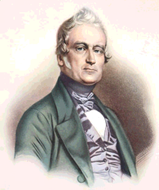 xxxxxThexunrest created by these
political and social grievances simmered for some
years and then broke out in open revolt in both provinces in 1837.
Lower Canada was the first to be affected. There the rebellion was
precipitated by the government’s unsuccessful attempt to arrest
members of the radical Parti Patriote,
together with their leader, the politician Louis
Joseph Papineau (1786-
xxxxxThexunrest created by these
political and social grievances simmered for some
years and then broke out in open revolt in both provinces in 1837.
Lower Canada was the first to be affected. There the rebellion was
precipitated by the government’s unsuccessful attempt to arrest
members of the radical Parti Patriote,
together with their leader, the politician Louis
Joseph Papineau (1786-
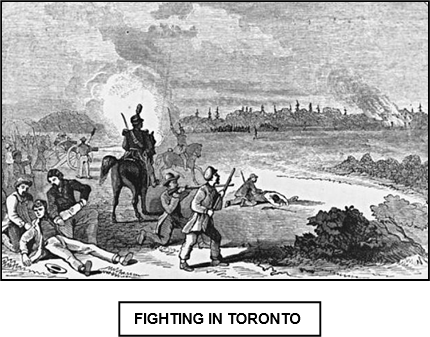 xxxxxInxUpper Canada the leader of
the Reform Party was the Scotsman William
Lyon Mackenzie (1795-
xxxxxInxUpper Canada the leader of
the Reform Party was the Scotsman William
Lyon Mackenzie (1795-
xxxxxUnsuccessful and short
lived though these rebellions were, they did highlight the need for
a reform of Canada’s outdated constitution. Inx1838
the British parliament appointed the statesman Lord
Durham (1792-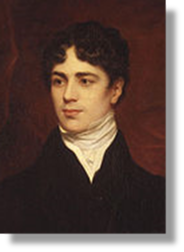 Canada,
and fearing that the United States might well view the colony as a
possible area of expansion, Durham recommended some sweeping
changes. Inxhis memorable Durham
Report of 1839 into ”The Affairs of British
North America”, he suggested that the two provinces should be united
under the title The United Province of Canada, the colony should be
granted a measure of responsible government (administered by a
“cabinet of colonists”) and that both former provinces should have
equal representation in the legislative council, despite their
difference in size. Such measures, he argued, would revitalize the
country’s economy, bring a greater degree of harmony between its
peoples, and unite the nation in the face of a possible threat from
the United States.
Canada,
and fearing that the United States might well view the colony as a
possible area of expansion, Durham recommended some sweeping
changes. Inxhis memorable Durham
Report of 1839 into ”The Affairs of British
North America”, he suggested that the two provinces should be united
under the title The United Province of Canada, the colony should be
granted a measure of responsible government (administered by a
“cabinet of colonists”) and that both former provinces should have
equal representation in the legislative council, despite their
difference in size. Such measures, he argued, would revitalize the
country’s economy, bring a greater degree of harmony between its
peoples, and unite the nation in the face of a possible threat from
the United States.
xxxxxThe
British government left somewhat vague the matter of responsible
government, but it did accept the union of the two provinces, and
passed the Union of Canada Act in 1841. Foreign policy and the
matter of international trade remained in the hands of the home
government, but, following further agitation, the colonists gained
responsibility for internal affairs by 1848. Durham had hoped that
his measures would also “anglicise” the
French-
xxxxxThe union of Lower and
Upper Canada was seen by Lord Durham as the first step in the
formation of a federation. In fact, as we shall see, an enlarged
“Dominion of Canada”, came into being in 1867
(Vb) under the British North America Act.
In the meantime the legislature was removed to Ottawa and a trade
treaty with the United States, signed in 1854, eased trade
restrictions and put an end to fears of an American take-
xxxxxIncidentally, the proposals of the so-
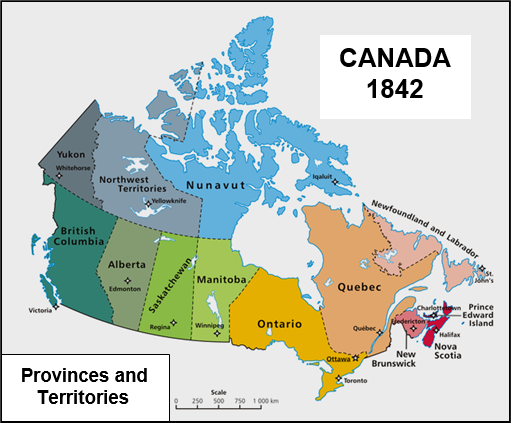 xxxxx…… In his report, Durham
hardly endeared himself to the French. Regarding the Canadian
problem as two nations at war with each other, he pronounced the
French as inferior to the British and “a people with no history and
no literature”! ……
xxxxx…… In his report, Durham
hardly endeared himself to the French. Regarding the Canadian
problem as two nations at war with each other, he pronounced the
French as inferior to the British and “a people with no history and
no literature”! ……
xxxxx……
Itxwas in 1842, the
year after the Union of Canada Act, that the north-
Va-


